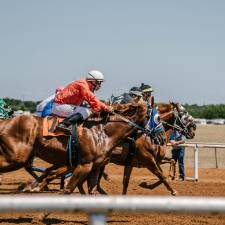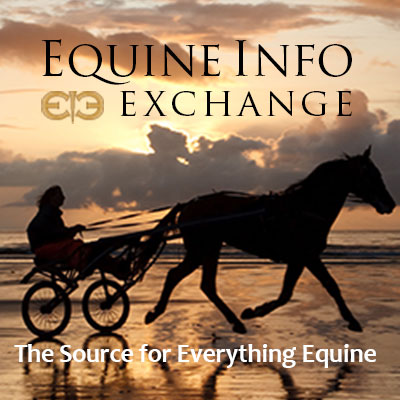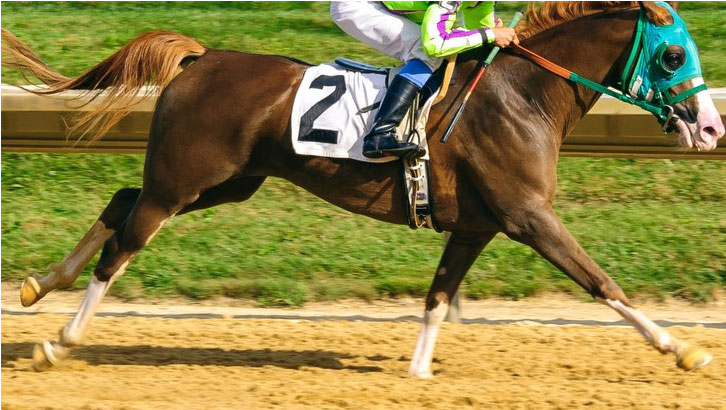
by Marion E. Altieri
The bond of equine and human athletes, when brought together in a race for the wire—is a powerful and awe-inspiring event. Jockeys and racehorses individually are the fittest and most- focused athletes on the planet. Together, moving as one body and soul, they create an experience so powerful that even the toughest of human souls are moved to tears.
While Thoroughbreds are the most common breed in the sport of horse racing, Arabians were the first racehorses. The oldest extant breed, they look virtually the same as they did over 5,000 years ago, when they traveled great distances across desert sands in competitions that became both flat- and endurance-racing.
What started as utilitarian use of the breed evolved into an enjoyable competition that lifted spirits and made human hearts sing. The Race Horse wasn’t a concept born of the entrepreneurial mind of a man, but rather the natural evolution over time as the Arabian horse proved herself to be a power with which to reckon. The Original Racehorse literally is a Force of Nature.
In fact, the long history of the Arabian as race horse and companion across hundreds of tortuous miles was the inspiration that moved British gentlemen to breed Arabian stallions to their native English mares in the 17th and 18th Centuries.
The Arabians were renowned and coveted—even in Europe, even in the 17th Century, for their speed, yes—but also for the intelligence, loyalty, fearlessness and power. Many Arabian stallions were used at first, but eventually it was hammered out—for three Arabs stood out for producing the most significant new breed—the Thoroughbred.
The “many” Arab stallions came down to the three whose bloodlines were the strongest, most hearty and proven over the years. Those three Arabs became known as the Foundation Sires of the Thoroughbred breed—and their progeny were touted as being the best of solid, English stock, with all the aforementioned, enviable traits that the Arabs brought to the table.
Those three Foundation Sires were the Darley Arabian, the Godolphin Arabian and the Byerley Turk.
To this day, everywhere on Earth, to register any horse as being a genuine Thoroughbred —the breeder must be able to prove that the horse on both dam and sire sides goes back to at least one of the three Foundation Sires—or that horse cannot be registered as a Thoroughbred. (This is why pedigree is so important: it’s a fascinating study, to visit pedigreequery.com and trace a favorite Thoroughbred’s lineage, all the way back to her/his Arabian roots.)
Anyone who wishes to see real Arabian racehorses need look no farther than the Arabian Jockey Club(2) or the HH Sheikh Mansoor bin Zayed Al Nahyan Global Arabian Flat Racing Festival(3) for dates, locations, photos and videos of the world’s greatest and most accomplished Arabians as they race, both down the stretch and into the hearts of human connections and fans.
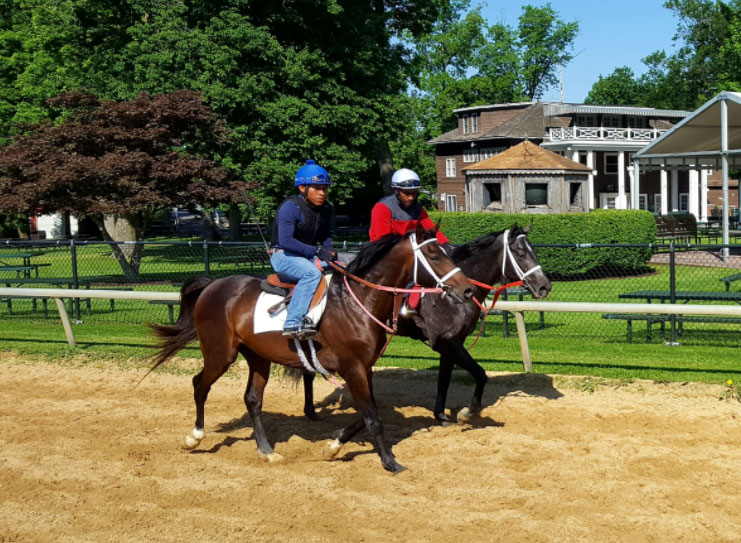
As accomplished, intelligent and self-confident as are Arabian race horses, of course they can’t train themselves. Arabian racehorses are trained very similarly to Thoroughbreds, with a few notable differences: the first and most notable difference is that, Arabians do not begin racing until they are at least three years old, unlike the Thoroughbreds, whose careers often begin at age two.
Like Thoroughbreds, each horse’s training reveals both distance and surface preferences, and level of racing ability. And, while the goal of winning in Arabian racing is the thrill of the race, and the victory, itself—races do provide purses, some of them quite rich.
For several years Grade 1 $100,000 races have been held at Churchill Downs, Keeneland and Santa Anita race tracks for Arabians. These races are very well received and extremely popular with the Thoroughbred crowds and they have gained respect as top-class racing and competitors in the racing community.
Races such as the Sheikh Zayed bin Sultan Al Nahyan Jewel Crown, dubbed the world’s richest Arabian race with a purse of €1.2 million, and the USD $1 million Qatar Arabian World Cup in France in October, 2016 are welcome additions to the world of high-purse opportunities for connections of Arabians. (Fans and bettors, also, benefit from higher purses and the payouts associated therewith.)
Perhaps the best-known of the Million Dollar Purse Club, as it were, is the Dubai Khayala Classic, the second race on the Dubai World Cup card every March has been offering USD $1 million for several years. (This race is notable as a marketing tool, in that fans of Thoroughbred racing who may not-yet be aware of Arabian racing—are exposed to the glorious sport either in person at Meydan, or via television, radio and Internet simply because the Arabian race shares the card with so many extremely-high-level Thoroughbred races.
This is a brilliant way to grow the fanbase for the sport of Arabian racing!)
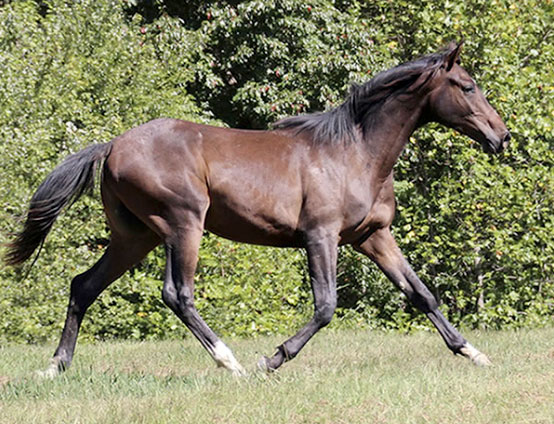
Yes, Arabian horse racing has been around as long as the breed, itself. And, while the 20th and 21st Centuries have brought a renewed interest on the part of horse race fans—the diligent, brilliant breeders and owners never left.
That is, while some American Thoroughbred breeders may have been in the business of breeding Thoroughbreds since the late 19th Century—and that’s a wonderful legacy—some families in Iraq and the Saudi Peninsula have bred and raced Arabians for over 400 years.
Four centuries is a long time for a family to carry on traditions, and pay obsessive attention to bloodlines and strains—but it’s also a time period during which such knowledge and devotion to the breed assures that each human generation learns at the proverbial knees of their ancestors.
And that generational wisdom includes far-more than the mere study of covers—for a family who’s bred, raised, loved and raced Arabian race horses since the 17th Century has emotional DNA that is inextricably bound up with the very spirit of the great Desert Horse, itself.
Indeed, Arabian horses are far-more than a breed to race: they are the breed that is loved as members of the family. And family, of course, always comes first.
Notes
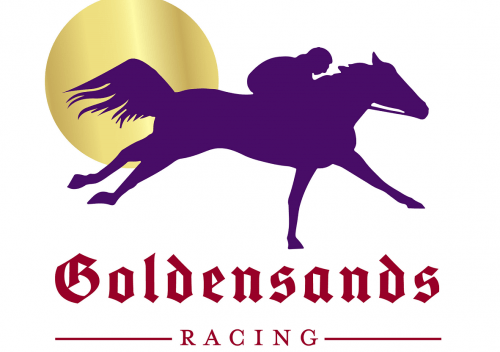
1) Arabian racing is thrilling, an emotional ride through desert sands, European, Australian and American race tracks—but it’s not an exclusive club, by any means. Seasoned horsewoman, Amanda Roxborough, now is offering racing partnerships via Goldensands Racing.
Those wishing to engage in a relationship with the exotic, otherworldly-beautiful, exquisite Arabian race horse are invited to contact Ms. Roxborough, and explore the possibilities Here, her invitation:
“Our unique syndicate is a three-horse Arabian race horse lease package, with the express intention to race our horses. There is a total of 20 shares in this lease offering, and [we are open to members “sharing a share,” to make [ownership even more approachable.] This is ownership without the [personal risk] of purchasing the horses [solo.]” said Roxborough. “Think, time share in a race horse…”
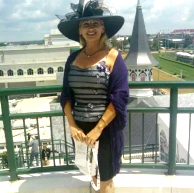
2) Click here to visit: Arabian Jockey Club:
3) Click here to visit: HH Sheikh Mansoor bin Zayed Al Nahyan Global Arabian Flat Racing Festival
4) Arabian race horses starring in a video, here in the Dubai World Cup official promo film, © 2012, Dubai Media, Inc. Note that every horse in the video is an Arabian: this was at the special request of HH Sheikh Mohammed bin Rashid Al Maktoum









